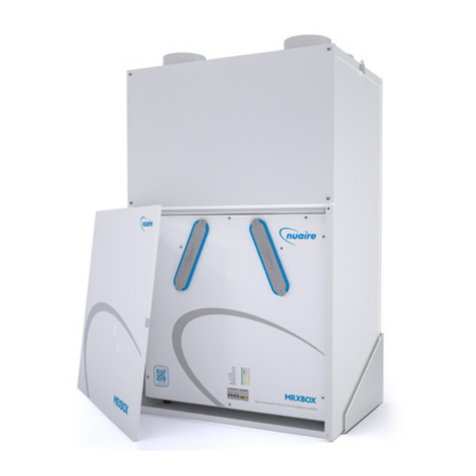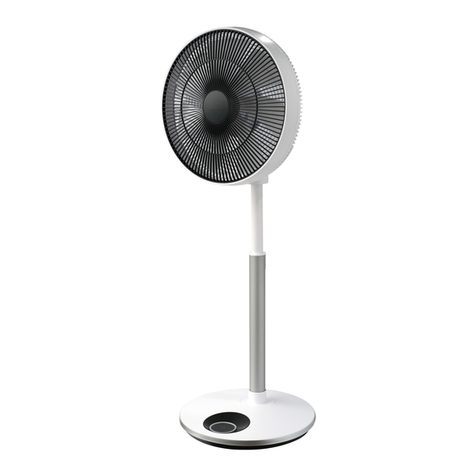SOLaVent SR8001 User manual

SolarEast Australasia Pty Ltd
GENERAL INSTALLATION NOTES.
Prior to installation of this equipment, use the cardboard wrapping to cover the solar cell to prevent fan operation
during installation. Secure the wrapping to the equipment with tape. Remove the cardboard as the final installation
action. The fan blade may pose a laceration risk should it operate during the installation process.
Also use part of the cardboard to cut a template for marking the roof cut out. This should be a 540mm square section
with a 400mm diameter hole in the centre.
Congratulations on your purchase of the SOLaVENT PV Attic Fan by SolarEast Australasia, an Australian
corporation. We trust your home will benefit from its operation for many years. It is important that you read
this manual before you install this equipment
This equipment should be installed by a professional installer due to the dangers at heights. Installation
should not be undertaken unless you are accustomed to and confident in performing this work safely. All
State and Federal legislation pertaining to Occupational Health and Safety must be complied with. It is the
installer’s responsibility to ensure the product can be installed without risk of future leakage or damage to
the property.
Warning –Prior to operation of this equipment, air intake eave grills MUST be installed, preferably on the
opposite side of the house (south side). Recommended air intake venting for eaves and soffits is roof space
area (Square Metres)/0.3 = Square centimeters of inlet vent area. Failure to do so could create negative
pressures in the roof cavity and house which could interfere with proper fluing of carbon monoxide steaming
from combustion heating appliances
Take Note - Installation and service must be performed by an authorised person. This equipment must be
installed in accordance with:
1. Manufacturers Installation Instructions
2. Municipal Building Codes
3. Any other State or Federal Statutory Regulations
Take Note –Special consideration must be given in flat roof installations to ensure against water ingress back
into the roof cavity via the equipment. It is the installer’s responsibility to ensure that excessive roof pitch
above 30° does not allow water ingress into the roof cavity via the equipment.
SR8001 SOLaVENT Attic Fan
Installation Instructions
Version 1.01 February 2016
SolarEast is not responsible for any loss or damage to any person or property in the course of installation or
operation of this equipment.
Each person that installs or services this equipment must comply with all applicable OH&S requirements
relevant the work being undertaken including but not limited to plumbing work, electrical work and working
on roof tops.
IMPORTANT- SolarEast Australasia Pty Ltd or any of its authorised representatives do not accept
responsibility or implied responsibility for failure to install the equipment in accordance with this
installation manual or for costs associated with any leakage into the property and any subsequent direct
or indirect damage.
This equipment must be installed to comply with all State and Federal laws, building codes, roof
warranties and regulations. Installation of this equipment must only be undertaken by individuals skilled
in the use of the tools required for installation.

SolarEast Australasia Pty Ltd
Orientation of the equipment should be north facing and free of shading from trees or other structures.
The equipment is fitted with a thermostat set to 30°C. The fan will not operate if the air temperature at the thermostat
is below 30°C. This thermostat will prevent operation in winter months reducing venting of roof heat.
Any additional flashing use during installation of this equipment must comply with AS/NZS 4020 “Testing of products
for use in contact with drinking water”.
Roof rafters must not be interfered with during this installation. If a rafter is required to be cut, please seek advice from
a certified building professional.
NOTE –The following installation instructions are offered as a guide only due to the diversity of roof types and profiles.
Solavent attic fans should be installed by suitably qualified persons who can decide on the best installation method for
your roof top.
METAL ROOF TOP INSTALLATION
1. Prior to installation of this equipment, use the cardboard wrapping to cover the solar cell to prevent fan operation
during installation. Secure the wrapping to the equipment with tape. Remove the cardboard as the final installation
action. The fan blade may pose a laceration risk should it operate during the installation process.
2. Locate the Solavent carefully on the roof top. It should be positioned so that the higher horizontal edge is located under
the ridge cap to ensure against water ingress.
3. NOTE - Try to locate the Solavent horizontally between roof rafters
4. NOTE –Locate the Solavent such that there is even overlap of the vertical edges over the peaks of the corrugations so
that these edges can be effectively sealed against water ingress.
5. Remove the screws from the section of ridge cap to be used and keep these screws.
6. Use the 540mm x 540mm cardboard template to mark the position of the Solavent and the 400mm diameter area of the
roof to be removed. Mark these mounting positions on the roof top using a permanent marker.
7. Use an appropriate cutting tool such as tin snips and remove the 400mm diameter section of metal
roof. Ensure correct protection including gloves and eye protection is used during this process.
Remove any insulation from this section if required.
8. You may wish to fasten a batten under the roof to along the line of the bottom edge of the Solavent
to fasten the roofing screws to. This would be more of a consideration in high-wind areas.
9. Apply generous beads of a high quality roof and gutter silicon to the roof corrugation peaks inside of the marked area
on the roof top and gently tilt and slide the Solavent up under the ridge cap setting it down onto the silicone beads.
10. Re-insert the roofing screws through the Solavent and ridge cap of the roof using roofing screws removed at the
commencement of the installation. Note that at least two roofing screws should be used. If screws are old or corroded,
they should be replaced.
11. Contoured bitumen impregnated foam, available from most major hardware chains, should be inserted across the full
span of the bottom horizontal edge of the Solavent to protect against any wind driven rain or splash backs into the roof
cavity and to prevent ingress by insect and small animals. The contoured foam is pre-formed and effectively fills the
gaps in the valleys of the corrugated iron roof.
12. The two vertical edges and lower edge can now be fastened to the roof using suitable self-drilling roofing screws. A
minimum of six additional roofing screws should be used. If the pre-drilled holes in the base of the Solavent do not line
up with the peaks of the roof, ignore these holes however fill with silicon.
13. NOTE –ONLY fasten roofing screws to peaks of corrugations. Insert silicone into holes before fastening with roofing
screws. Insert silicone into any unused pre-drilled holes in the Solavent base plate.
14. Do a final inspection and use silicon around any the edges of the Solavent base and any other gaps that are evident.
15. Remove the cardboard cover from the PV panel and the Solavent will now be fully operational

SolarEast Australasia Pty Ltd
TILED ROOF TOP INSTALLATION
1. Prior to installation of this equipment, use the cardboard wrapping to cover the solar cell to prevent fan operation
during installation. Secure the wrapping to the equipment with tape. Remove the cardboard as the final installation
action. The fan blade may pose a laceration risk should it operate during the installation process.
2. Prior to lifting the Solavent to the roof top, use a suitable bending tool such as pliers to lift the left hand and right hand
edges of the Solavent. This will aid against any water ingress after the Solavent is installed.
3. Locate a suitable position on your roof, facing north if possible and un-shaded by trees or adjacent structures. The
Solavent will operate best at a high position on your roof-top.
4. The Solavent will eventually be located under your tiles with water ingress protection from bitumen impregnated foam
available most leading hardware stores.
5. Lift 5 tiles from the roof top (three lower and two higher) and push the sixth (top right) up for later in the installation
process. Please note that due to the many sizes and profiles of tiles, the appropriate number of tiles should be lifted by
a professional person.
6. The two left hand side tiles will be used later in the installation so ensure they are not damaged in removal.
7. Slide the Solavent in under tiles on the top and left hand edges as far as is practical without disturbing these tiles
8. Ensure the Solavent top edge overlays the roofing batten so it can be fastened. Using approved roofing screws, fasten
the top edge to the battens and left hand edge to the rafter or batten.
9. NOTE - Be sure not to drive the left hand edge screws down to hard if fastening to rafter as this will depress the left
hand edge of the Solavent base plate and possibly disturb tiles.
10. Fasten the right hand side vertical edge o the batten or rafter being aware of 9, above.
11. NOTE –All screw points must be sealed with a high quality roof and gutter silicon.
12. Cut lengths of bitumen impregnated foam for the top edge and the two vertical edges. Insert the foam between the top
line of tiles and top edge of baseplate. Secure with silicone effectively to prevent water ingress.
13. The right hand vertical edge foam can also be silicon sealed to the baseplate being sure to extend it up under the tile
that has been lifted. This will now sit under the high part of the tiles that will be re-installed. Do the same to the left
hand side foam.
14. Re-install the tiles on the right hand side and slide the sixth tile that had previously been pushed upwards back into
position. This effectively protects against water ingress on this side.
15. Using the two tiles removed from the left hand side of the Solavent cavity, mark and cut them vertically so that the
vertical tile edge is between 20 and 30mm from the intersection between the horizontal and vertical (exhaust neck) edges
of the Solavent.
16. Cut the two left hand side tiles vertically using an approved tile cutting device.
17. NOTE –Ear and eye protection must be used and ensure cuts are made by a competent trained person.
18. Slide in the two cut tiles over the foam that was previously installed. At this time, you will have foam
installed on the top and two vertical edges of the baseplate, all fully sealed with silicon.
19. The final installation is the foam under the bottom edge of the baseplate, effectively sealing the gap between the Solavent
baseplate and the tiles.
20. Use additional silicon to effectively seal all gaps on and around the Solavent. Ensure all tiles are sitting normally on and
around the Solavent.
21. NOTE –If tiles have lifted, it may be possible that the bitumen impregnated foam chosen by the installer is too thick. It
is important that the tiling surrounding the Solavent is not raised or cracked. If raised the professional installer may
choose to lift the tiles and trim the foam to better suit the installation.
22. Adjust the panel elevation if required to optimize the elevation and direction of the Solavent
23. Remove the cardboard cover from the PV panel and the Solavent will now be fully operational
Table of contents
Popular Fan manuals by other brands
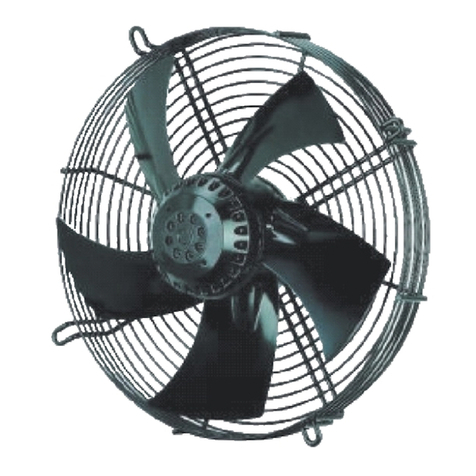
Ebmpapst
Ebmpapst S4E350-AA06-24 operating instructions
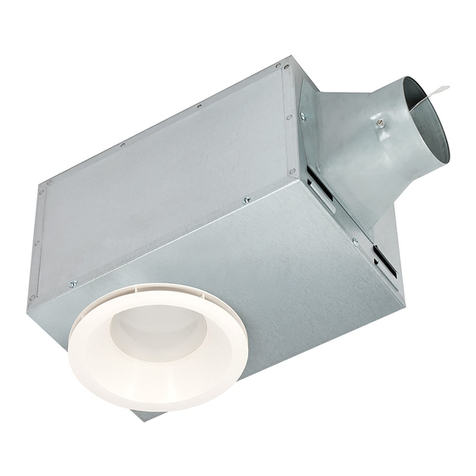
Delta
Delta breez REC80LED Installation and operating instructions

Ebmpapst
Ebmpapst W4E400-CP14-71 operating instructions

Ebmpapst
Ebmpapst S4E350-ZD02-01 operating instructions

Ebmpapst
Ebmpapst D4E225-CC07-37 operating instructions
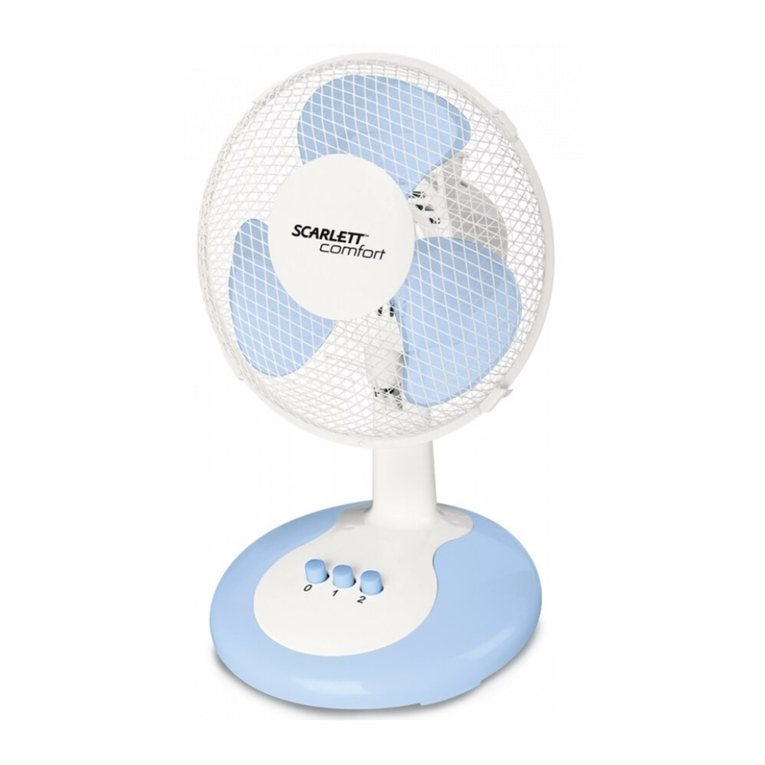
Scarlett
Scarlett Comfort SC-DF111S06 instruction manual
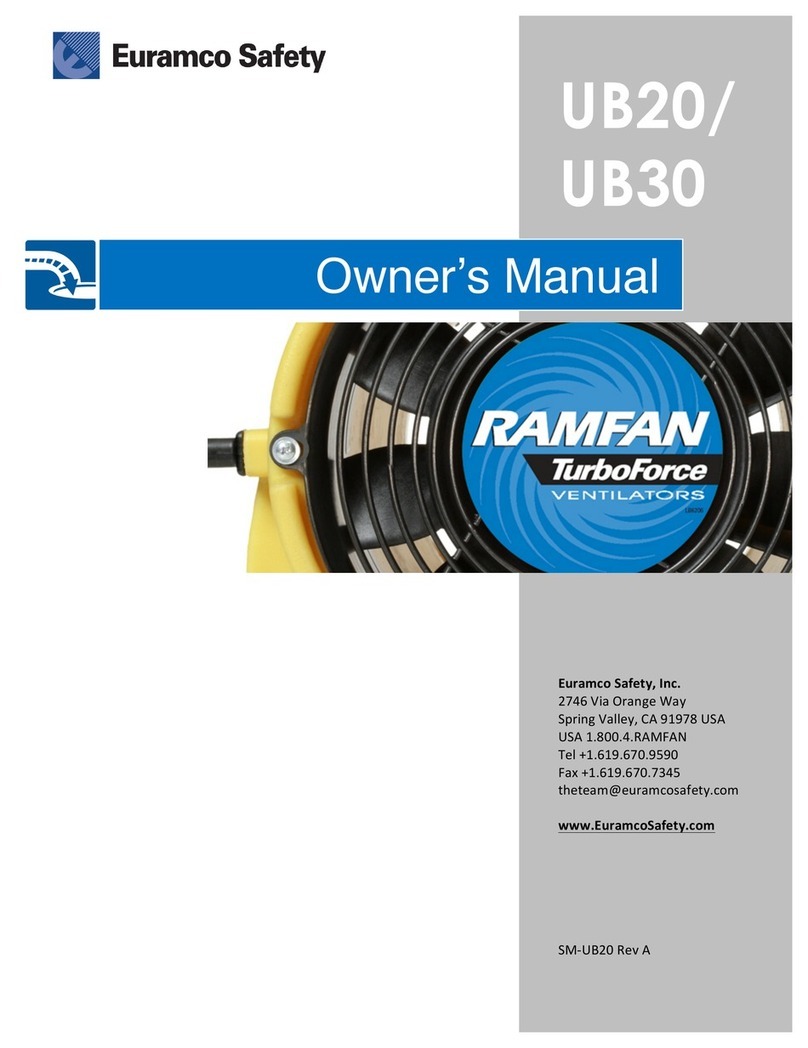
Euramco Safety
Euramco Safety UB20 Series owner's manual
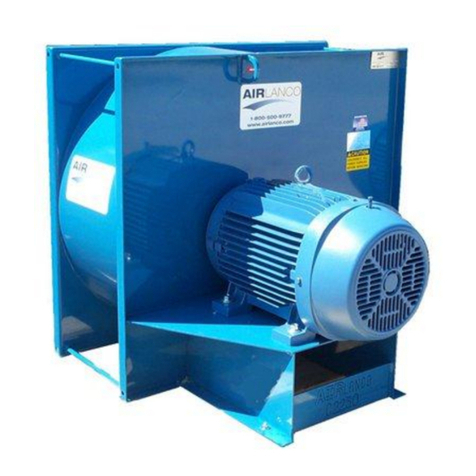
AGI
AGI AIRLANCO C2000 Installation and operation manual

Ebmpapst
Ebmpapst K3G355-PG54-22 operating instructions

Ebmpapst
Ebmpapst AF1250-001 operating instructions
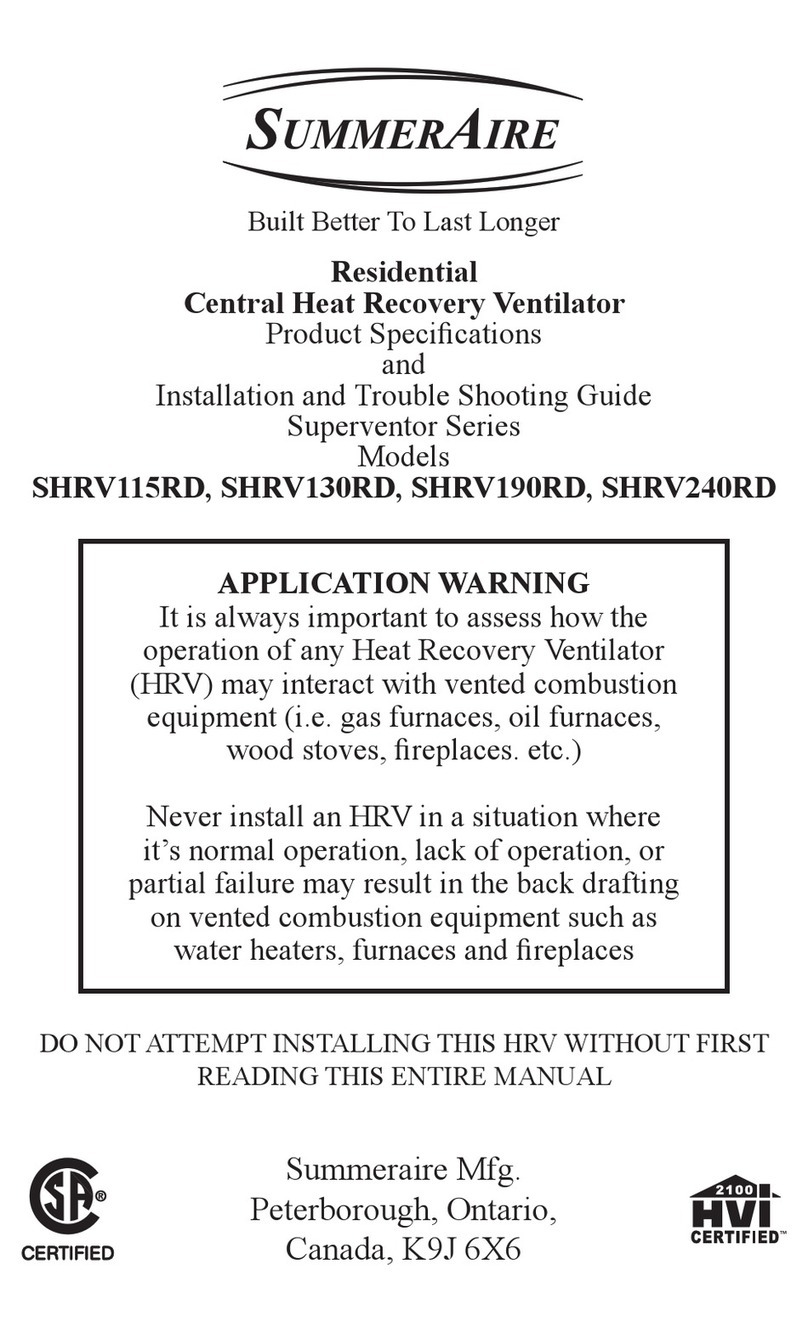
SummerAire
SummerAire SHRV115RD Product specifications and installation
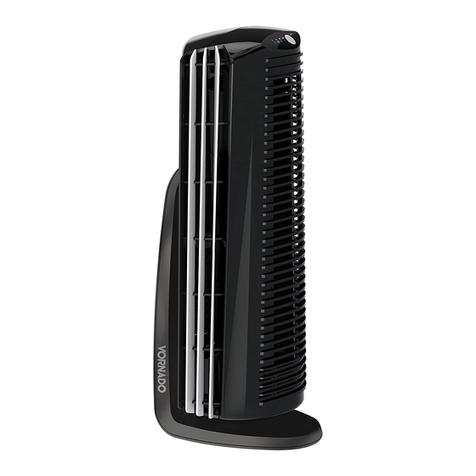
Vornado
Vornado Duo owner's guide
